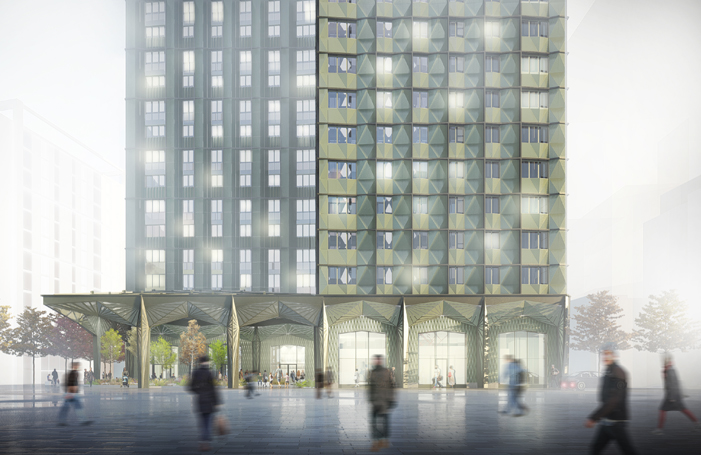Can architects apply lessons learnt from modular housing to traditional house building to gain more control over design development? HTA’s managing partner Simon Bayliss thinks they can.
Modular housing developers expect to achieve good build quality, low defects and rapid delivery on site once planning approval has been obtained. HTA’s twin high-rise towers in Croydon, which will be the tallest off-site manufactured modular structures in the world, received planning permission in November 2017 and started on site in January.

Working to such timelines, and achieving the level of quality that an investor/operator wants to see in a purpose-built, build-to-rent asset requires far more design development and a higher level of technical detail from the architect at the pre-planning stage.
‘It’s a different mindset in modular housing. Developers are interested in delivery, not land value uplift, so there is none of the “let’s get planning and sort out the details later” type of approach,’ says Bayliss.
‘Instead we want to take more final design decisions and co-ordinate everything at an earlier stage in the process.’
Bayliss is a vocal champion for modular and off-site housing as a route to better quality homes and argues that instead of losing control of quality, as can happen routinely with design and build, modular construction offers architects more control over detailed design and an opportunity to reclaim build quality.
More decisions are taken at an early stage, and so far, HTA has been retained on all of its large-scale modular housing projects to see them through to completion.
He now believes that applying more of the rigour of the modular design process to traditionally procured housing is having benefits at HTA and offers a more general lesson to the profession.
Once design decisions have been taken and co-ordinated, any changes introduced after the project has been through design development then become ‘variations’ and become chargeable items to the client.
‘It tends to avoid the architect being pushed around by contractors looking for opportunities to value engineer and do things more cheaply. The architect is not caught on the back foot, because the solution is already there, and if changes do have to be made, then at least the architect gets paid for them.’
It sounds like doing a lot more design work, but Bayliss argues that it is more about making sure that the crucial elements in the basic design have been properly resolved and any potential issues pinned down and addressed in advance.
‘It may mean going the extra mile here and there, and carrying out some studies, but these are also things that planners are increasingly looking for,’ Bayliss adds.
Around one third of all work at HTA, which concentrates solely on housing and placemaking, is modular, putting the practice in a small club of UK practices designing for modular and off-site construction at this scale.
Bayliss accepts that house builders generally, with a few exceptions, continue to drift only slowly towards off-site manufacture, despite the urging of government ministers to modernise the industry.
But he is also convinced that the tide is flowing only one way and that skills shortages, the volume house builders’ continuing struggle with quality issues, and the desire for more cost certainty, will inevitably combine to drive the industry down the modular design path.
Bayliss is also one of the believers that modular design is not a threat, but an opportunity for the profession to regain ground on design quality, and that the lessons are already there to be learnt.
Thanks to Simon Bayliss, Managing Partner, HTA Design.
Text by Neal Morris. This is a Professional Feature edited by the RIBA Practice team. Send us your feedback and ideas
RIBA Core Curriculum Topic: Business, clients and services.
As part of the flexible RIBA CPD programme, Professional Features count as microlearning. See further information on the updated RIBA CPD Core Curriculum and on fulfilling your CPD requirements as an RIBA Chartered Member.
Posted on 26 April 2018.









